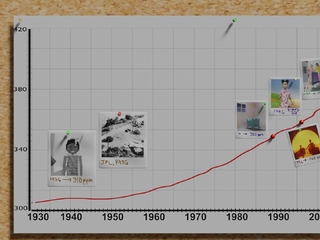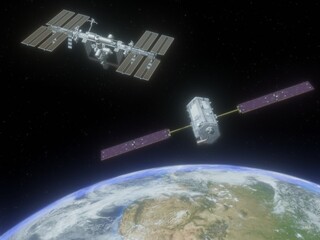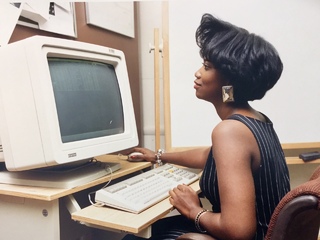Earth Science Stories | March 23, 2022
JPL Scientist Speaks with White House Committee
Schoolchildren and office-workers alike have gotten used to showing off their bedrooms and living rooms during virtual meetings and class lessons. But imagine showing off your home office to the White House.
That was the situation where Dave Crisp found himself on January 20. A newly-retired scientist at NASA’s Jet Propulsion Laboratory, Dave was one of five panelists speaking virtually to a White House committee on science and technology. The topic was greenhouse gases. Despite all the urgency over climate change, humanity still doesn’t have a complete grasp on all the sources of greenhouse gases across the planet, and how much each emits. The panelists presented the latest scientific advances to plug these gaps.
Against a backdrop of a wall crammed with books, Crisp spoke about NASA-JPL’s pioneering satellite devoted to measuring carbon dioxide from space. In a corner of his screen, in fact, was a banner where you could just catch the logo for this self-same satellite, the Orbiting Carbon Observatory-2 (OCO-2). It wasn’t too long ago that people were skeptical that a satellite out in space could possibly measure concentrations of carbon dioxide in Earth’s atmosphere. OCO-2 is one of the satellites that has shown it can be done.
During his remarks, Crisp talked about the advantages of the OCO-2 satellite. For example, it can make about three million measurements from space a month! It can also pick up data from extremely remote areas of the world, like the Amazon rainforest, where ground stations are few and far between.
Three million sounds like an astronomical amount. But as Crisp pointed out, that actually covers only 1% of Earth’s surface. However, because OCO-2 has led the way, new satellites are in development around the world, and in the next decade we can expect much greater coverage in carbon dioxide measurements from space. Several speakers representing these new efforts, like Yasjka Meijer from the European Space Agency, also spoke at the session.
But it’s not all about space: ground measurements taken directly from factories, power plants, and busy roadways are also crucial, though not always complete world-wide. Crisp concluded by saying the big challenge right now is to combine the excellent global coverage of the satellites with the detailed accuracy of on-the-ground measurements. Doing this will ensure that we get the “best of both worlds,” as speaker Kevin Gurney put it, in terms of both coverage and accuracy.
The talks were followed by a discussion moderated by geophysicist Maria Zuber, who is a co-chair of the White House committee (officially called the President’s Council of Advisors on Science and Technology, or PCAST). She thanked the speakers for the great discussion and for being clear, informational, giving recommendations for what needs to be done, and managing to do that while staying on schedule.






